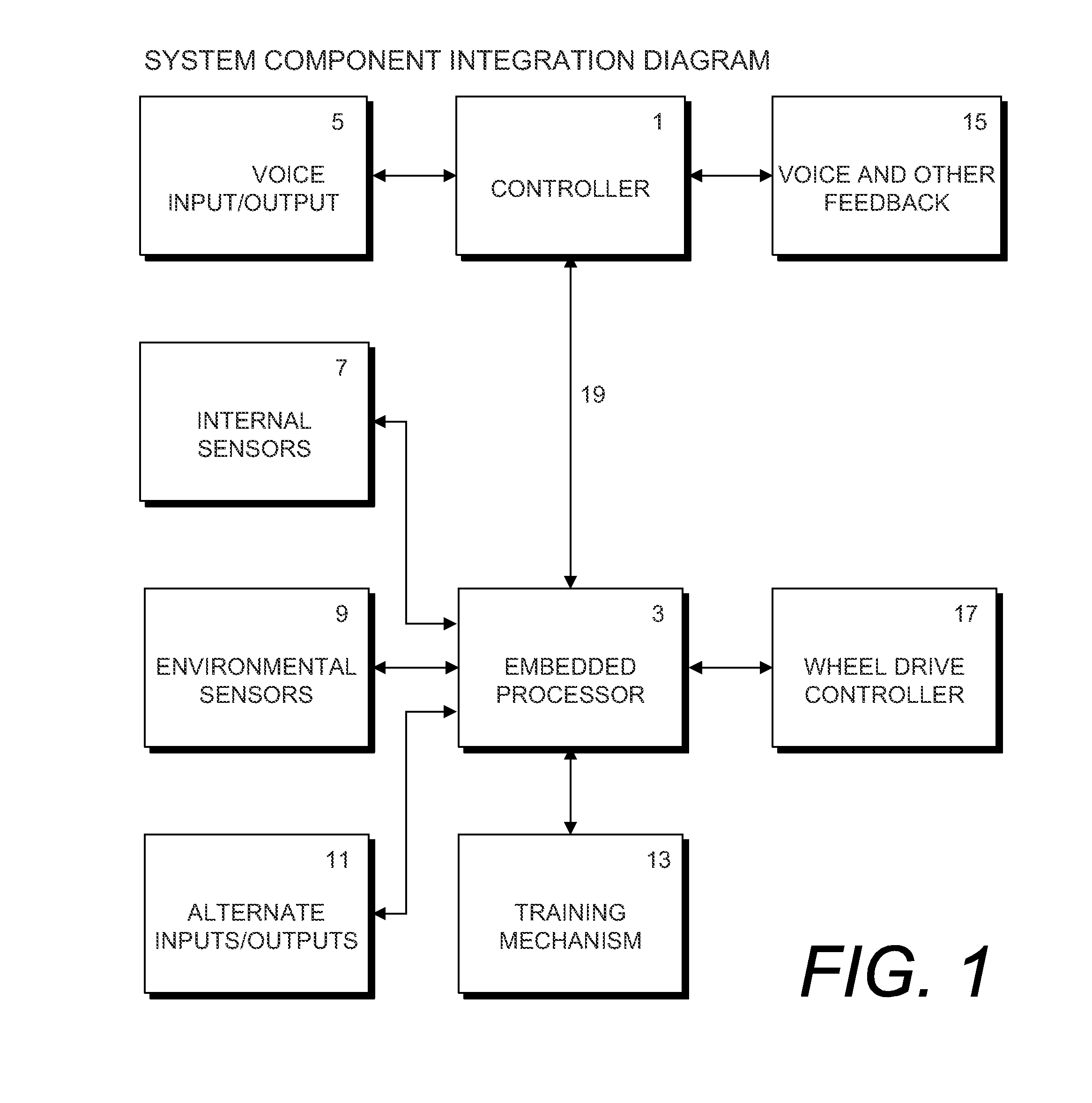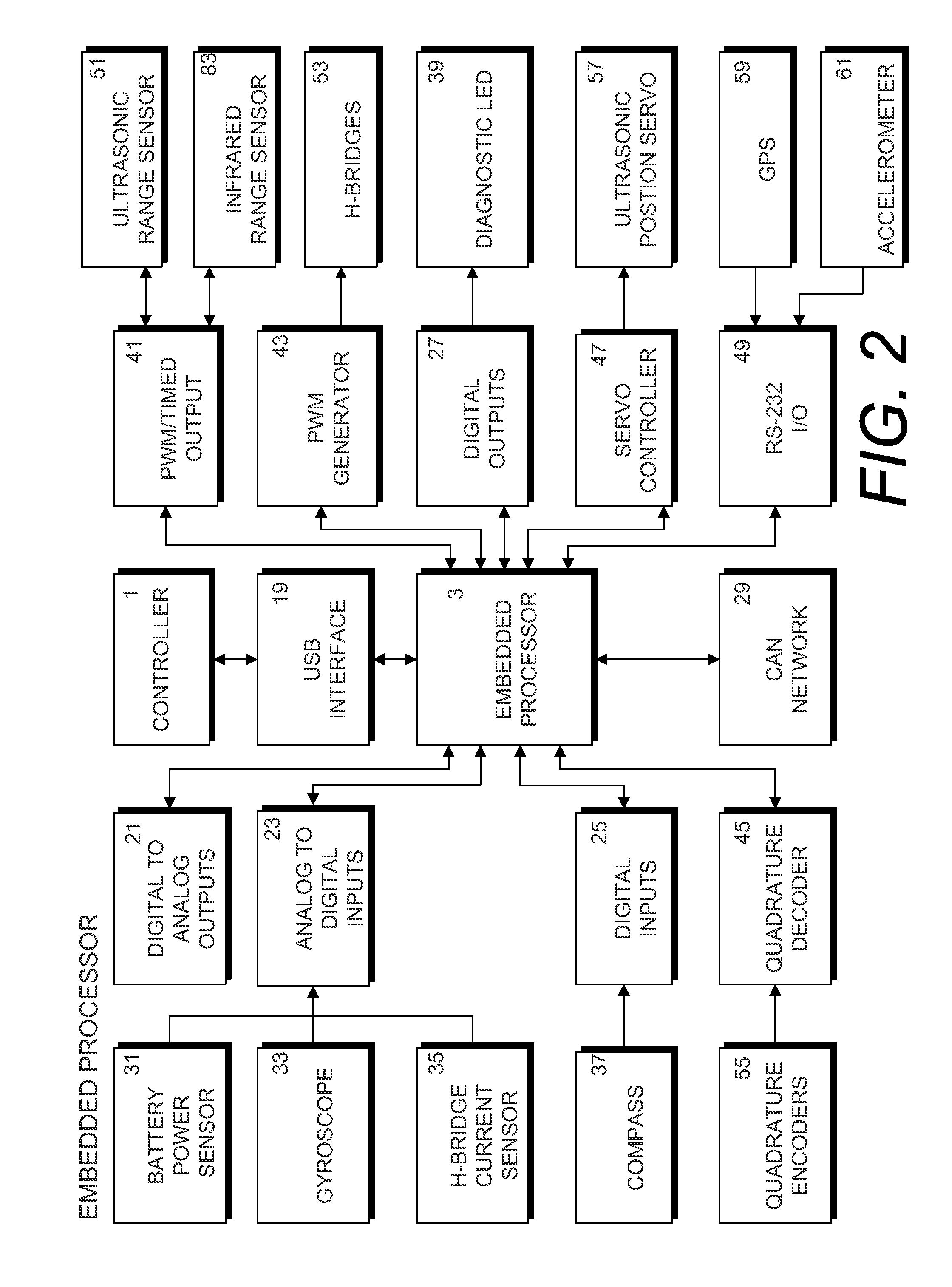Automated personal assistance system
a technology of automatic assistance and personal assistance, applied in the field of automatic personal assistance systems, can solve the problems of affecting the acceleration of biopsychosocial changes in adults already compromised, affecting the mobility of adults, and limiting mobility, so as to achieve optimal safety for the occupant and respond quickly
- Summary
- Abstract
- Description
- Claims
- Application Information
AI Technical Summary
Benefits of technology
Problems solved by technology
Method used
Image
Examples
Embodiment Construction
[0031]As required, detailed embodiments of the present invention are disclosed herein; however, it is to be understood that the disclosed embodiments are merely exemplary of the invention, which may be embodied in various forms. Therefore, specific structural and functional details disclosed herein are not to be interpreted as limiting, but merely as a basis for the claims and as a representative basis for teaching one skilled in the art to variously employ the present invention in virtually any appropriately detailed structure.
[0032]Referring now to the drawings in more detail, the reference number 10 generally designates an automated personal assistance system or device according to the present invention. Referring to FIG. 1, a system component integration diagram of an embodiment of high-level architecture of the assistance system or device 10 is illustrated. Given voice input / output at 5 and voice and other feedback at 15, an assistance controller 1 performs high-level intellige...
PUM
 Login to View More
Login to View More Abstract
Description
Claims
Application Information
 Login to View More
Login to View More - R&D
- Intellectual Property
- Life Sciences
- Materials
- Tech Scout
- Unparalleled Data Quality
- Higher Quality Content
- 60% Fewer Hallucinations
Browse by: Latest US Patents, China's latest patents, Technical Efficacy Thesaurus, Application Domain, Technology Topic, Popular Technical Reports.
© 2025 PatSnap. All rights reserved.Legal|Privacy policy|Modern Slavery Act Transparency Statement|Sitemap|About US| Contact US: help@patsnap.com



